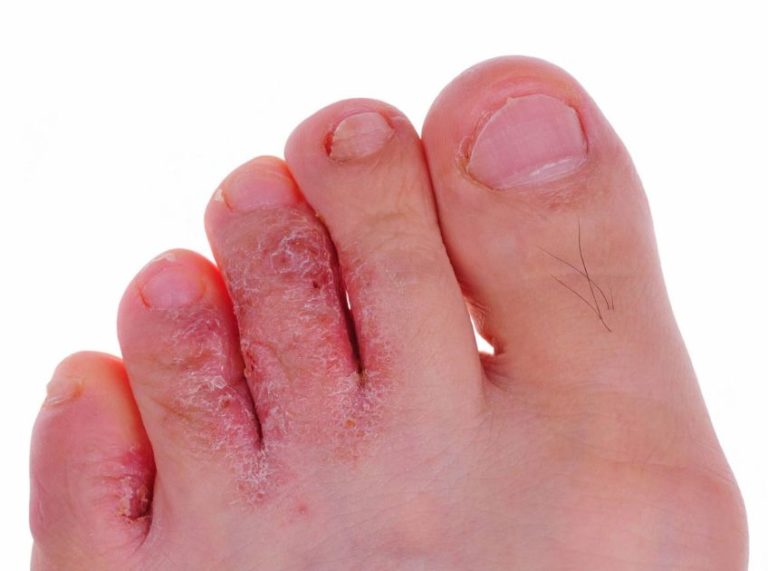
Important: This article is for informational purposes only. Please read our full disclaimer for more details.
If you have recently noticed a few red spots on your nose, don’t fret! Usually, they are not a matter of concern and indicate skin issues like acne or rosacea.
Our skin is sensitive to a lot of irritants and allergens and can catch bacterial infections easily. When proper skin hygiene is not maintained, it results in the development of red spots on and around the nose that resolve over time.
However, in rare cases, they may indicate something serious, too.
Let’s find out the possible reasons behind red spots on the nose and what underlying problems they indicate. We’ll also discuss the best preventive and treatment options.
What Causes Red Spots On The Nose?
Acne
Skin in and around the nose is a powerhouse of oil glands, also called sebaceous glands. People with oily skin often end up developing more oil in the area, which ultimately results in clogged pores and bacterial buildup (1).
All this causes acne, which is represented by red spots on the nose. Sometimes, they may also have pus inside. Usually, such red spots (acne) resolve after a few days, even if you don’t use any particular product but maintain skin hygiene.
Freckles
People with high melanin content have the tendency to develop freckles (2). While some are born with them, others develop as a result of constant sun exposure.
Initially, freckles appear as red spots but later turn brown and get enlarged. Over time, they become more and more easily noticeable.
Moles
Moles are usually brown, but they may look red initially. They are small, round, or oval-shaped skin lesions that can appear on the nose or any area of skin. You can notice the texture of the moles, which is either scaly or uneven (3).
Although rare, moles can turn into cancerous cells. So, if you are a little suspicious, let a dermatologist check your mole and give you information about it.
Spider Angioma
When the red spots turn into a spider-like formation wherein you can see a red central area with small blood vessels radiating out, it indicates a skin condition called spider angioma (4). It is painless.
Usually, they develop on the nose and cheeks. While in some cases, it resolves, in others, it may be a sign of cirrhosis, rheumatoid arthritis, or overactive thyroid.
Besides this, pregnant women may also develop spider angiomas that disappear over time.
Rosacea
It is one of the common skin problems wherein red and irregular bumps develop on the nose and cheeks. You may also witness breakouts that lead to acne pimples. One of the telltale signs of rosacea is the reddish nose and cheeks that always look blushed (5).
Actinic keratosis
When the skin is exposed to ultraviolet rays excessively, it may develop small, red, dry, or scaly patches on the skin. They may also look pink, white, or tan. Such lesions are a sign of precancerous skin condition (6).
Skin Cancer
If you witness a red bump on the nose or a scaly patch, it may indicate some serious underlying condition like skin cancer. It is of three different types-
- Melanoma: Melanoma is the most dreadful form of skin cancer, wherein brown or black moles develop on the skin. However, people may have them in red, pink, and even white. One thing that differentiates melanomas from normal moles is that they keep changing color, size, and shape.
- Basal Cell Carcinoma: If you experience red patches or bumps on the nose or face that are itchy and often turn sore, it could be basal cell carcinoma. Such bumps or patches are usually found on the face and do not resolve over time.
- Squamous cell carcinoma: When a red spot turns warty, causing scaly patches on the skin, it may indicate a serious concern called squamous cell carcinoma. It grows in the areas exposed to the sun. With time, these warts may crust and bleed.
If you suspect any of the aforementioned signs, visit a dermatologist as soon as possible. Skin biopsy can confirm if the red spots on the nose are normal or cancerous growths.
How To Treat Red Spots On The Nose
Now that we have understood what are the major causes of red spots on the nose, here are the treatment options for each of them-
- Acne: Red spots due to acne usually resolve on their own; however, if it concerns you, working on the underlying cause is important. You can try to manage the skin condition by using special skin care products. Moreover, using medications to treat acne-causing bacteria, such as benzoyl peroxide and salicylic acid, will be helpful.
- Freckles: The best way to cease red spots due to freckles is by limiting sun exposure and applying a generous amount of sunscreen before heading out.
- Moles: Moles are usually black, brown, or red in color and appear as red spots initially. Usually, there is no treatment for moles, but people may get them removed surgically.
- Spider Angioma: If the doctor determines the underlying cause of spider angioma and starts treatment, the symptoms will disappear. Sometimes, a special pulsed dye laser is also used to destroy small blood vessels that make spider angioma appear red.
- Rosacea: Antibiotics and certain topical treatments work wonders in curing rosacea.
- Actinic keratosis: Most cases of actinic keratosis turn into skin cancer; therefore, immediate consultation with the doctor is required.
How To Prevent Red Spots On The Nose?
Preventing red spots on the nose is the first step to staying away from them. The best way to prevent them is by maintaining proper skin hygiene and using the products meant for your skin type.
Using sunscreen can protect skin from different skin conditions, including skin cancer.
At the same time, if the condition is triggered by certain things, such as spicy foods, it is advised to prevent them.
When To Visit A Dermatologist?
Seek medical attention when the red spots on the nose are-
- not healing for a long time
- appear healed but come back
- bleeding
- changing size, color, and shape
- warty and crusty
Most of the cases of red bumps on the nose are not a matter of concern and occur due to acne or sun exposure. However, if the condition looks suspicious, book an appointment with the dermatologist as soon as possible.
If it’s a case of cancer, catching it in the initial stage can help resolve it before it spreads.
Conclusion
Red spots on the nose are very common, and people may develop them due to different reasons. Maintaining proper skin hygiene, a good skincare routine, and taking care of skin according to its type can prevent their occurrence.
At the same time, using good quality sunscreen all the time, especially before going out, is essential to prevent many skin problems. If anything looks doubtful, talk to your dermatologist.
You Might Also Like:
- Headache And Nosebleed: Causes, Treatment, And Prevention Tips
- Does Ice Make Your Nose Smaller?
- Why Do I Wake Up With A Stuffy Nose?
- Can Teething Cause a Runny Nose and Sneezing
- 10 Easy Ways To Clear Stuffy Nose With Home Remedies
- The 8 Best Essential Oils for Stuffy Nose
- Yoga for Sinus: 6 Best Yoga Poses for Sinus Relief
- How to Get Rid of Blackheads on Nose Naturally at Home?
- How to Get Rid of Scabs in Nose, Causes, Treatment, Remedies?
- Home Remedies for Dry Skin on Face: 5 Easy Ways to Treat at Home
- How to Get Rid of Dark Neck Naturally?
- Damaged Hair – Causes, Home Remedies & Precautions
- How To Get Rid Of Pimples Naturally Overnight & Fast
- 11 Effective Home Remedies To Control Hair Fall Naturally


















